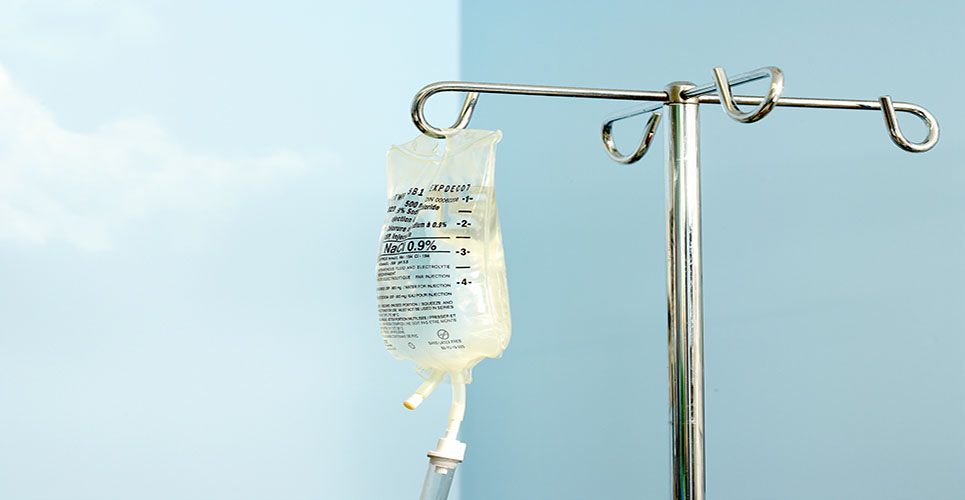teaser
Results from the PrefHer (Patient Preference for Subcutaneous (SC) versus Intravenous (IV) Herceptin) trial show that 92% of early HER2-positive breast cancer patients favoured quicker SC administration of Herceptin compared to the standard IV infusion.(1) Presented at the St. Gallen Breast Cancer Conference in Switzerland.
The primary reasons for preferring SC administration given by patients in the trial were less pain/discomfort and time saving.1 Herceptin SC was preferred by 92% of patients (95% CI 87–95%; p<0.0001), with 7% preferring IV administration (95% CI 4–11%) and 2% with no preference (95% CI 1–4%). Of the patients who preferred SC, overall preferences were ‘very strong’ in 74%, ‘fairly strong’ in 21% and ‘not very strong’ in 6%.(1) AEs were reported in 69% of patients (63% grade 1, 34% grade 2, 6% grade 3, no grade 4/5, 3% SAEs) with no new safety signals.(1)
Professor Lesley Fallowfield, Director Sussex Health Outcomes Research & Education in Cancer, University of Sussex said: “Time is precious to women with breast cancer, far too precious to be waiting around in busy chemotherapy centres. If subcutaneous delivery of Herceptin were to replace intravenous administration in the NHS then patients would spend less time in hospital and more time getting on with their lives. The results of this important study examining patient preferences are unequivocal. Women found subcutaneous delivery swifter, more comfortable and more convenient than IV. If this method is adopted in the NHS then the quality of life of women with HER 2-positive breast cancer could be dramatically improved.”
Further research, also presented at the St. Gallen Breast Cancer Conference, estimated that the NHS could save £15m by administering Herceptin subcutaneously to early and metastatic breast cancer patients versus the standard IV infusion.(2) The study, produced and developed by Roche Products Ltd, shows the main source of cost saving would come from a reduction in healthcare professional time associated with preparation and administration of SC versus IV Herceptin.
The study concluded that any savings generated could be reinvested in order to improve overall patient care and that reductions in patient time in hospital could potentially result in a better patient experience and improved hospital efficiency.(2)
Currently, not all of the cancer treatments deemed to be clinically effective are routinely available on the NHS. It’s estimated that the average cost of purchasing, administering and managing a cancer treatment which is not routinely funded by the NHS is £20,821.(3) This means a saving of £15millon could provide essential cancer treatment to an additional 720 patients.(2,3)
In addition, the rate of cancer cases is expected to rise by 45% between 2007 and 2030(4) and the growing patient demand will contribute to mounting pressure on staff capacity in chemotherapy suites. The government is committed to maintaining the NHS budget in real terms, but historically NHS spending has risen by 4% a year as a result of population growth and inflation.(5) Essentially, with no additional budget, this means achieving 4% efficiency savings year by year or, in cash terms, saving £15-20 billion between 2011 and 2015.(6) Solutions, such a switching to subcutaneous administration, could ease some of this burden and contribute to a better patient experience.(2)
References
- Pivot, X et al. Patient preference for subcutaneous versus intravenous trastuzumab: Results of the PrefHer study presented at St Gallen (March 2013)
- Samanta, K et al. The study, Cost Savings with Herceptin subcutaneous vs intravenous administration: A time in motion study. Roche Products Ltd. Presented at St Gallen (March 2013)
- Rarer Cancers Forum (2008), Exceptional England? An investigation of the role of Primary Care Trusts in making cancer medicines available through exceptional cases processes
- Mistry, M. Cancer incidence in the United Kingdom: projections to the year 2030, British
- Journal of Cancer (2011) 105, 1795-1803
- NHS Choices. About the NHS. Available at: http://www.nhs.uk/NHSEngland/thenhs/about/ Pages/overview.aspx Last accessed March 2013

